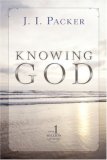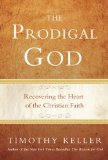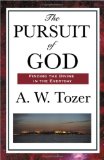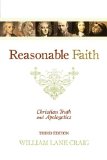A few weeks back I preached a message on Psalm 87, with reference to Colossians 1:21-23. I’m drawn to the “once… but now” contrast of the Colossians passage. I find it powerful in reminding me what God has done in Christ. I was curious if there are other passages in Scripture that use this same basic construction and came up with 4, all from Paul. I’m going to spend more time researching this, particularly passages where “but now” is present. In the meantime here’s a handy little table of the first set, with some explanation given below:
|
Passage |
Once (pote) |
But now (nuni de) |
Application |
| Col 1:21-23 | Once you were alienated from God and enemies in your minds because of your evil behavior. | But now he has reconciled you by Christ’s physical body through death | if you continue in your faith, do not move from the hope in the gospel. |
| Col 3:7-8 | You used to walk in these ways, in the life you once lived. | But now… (because you have been raised with Christ- v1) | you must also rid yourselves of all such things as these… |
| Eph 2:11-22 | Therefore, remember that formerly … you were separate from Christ, excluded from citizenship in Israel and foreigners to the covenants of the promise, without hope and without God in the world. | But now in Christ Jesus you who once were far away have been brought near by the blood of Christ. | destroyed barrier of hostility, peace, reconciliation, fellows citizens and members of God’s household, built together- vv14-22 |
| Philemon 1:11 | Formerly he was useless to you | but now… he has become useful both to you and to me (because he has become my son- v10) | receive Onesimus back as a brother- v16 |
There are practical implications &/or commands in these passages. Again, these might be stated clearly and succinctly (both Colossians passages and Philemon) or explained in more detail (Ephesians). The key here is to recognize the “but now” time frame, which we currently experience because of Christ, ought to have a tangible impact on our lives. I structured the chart the way I did because I found some common elements, even if they are, in a couple cases, unstated but understood. For example, at the risk of giving a Sunday School answer, the key to the “but now” portion is Jesus. It is explicitly stated in the Colossians 1 and Ephesians 2 passages, and understood from the context in both the Colossians 3 and Philemon passages. I inserted a relevant reference to this in the latter passages.
The aspect of this little study that stands out to me the most is the theme of reconciliation (again, sometimes explicitly stated and sometimes alluded to). The Colossians 3 passage is probably the least clear, although one could make a case that the Colossians are to reconcile their actions with their new reality in Christ (3:1). But there are two main areas of reconciliation I see in the other passages.
One is reconciliation between people and God (Col 1:22; Eph 2:13, 16, 18). Both Colossians 1 and Ephesians 2 state this clearly. Just look at the phrases used: alienated from God, enemies (of God) because of sinful behavior, separate from Christ, without hope and without God in this world. But now, reconciliation has come because of what Christ has done. Both of these passages refer to Christ’s death on the cross, in our place for our sins. It is very clear that reconciliation is only possible because of what Christ has done on the cross.
The second type of reconciliation we see here is reconciliation within the body of Christ itself. There are two main types:
Reconciliation between Jew and Gentile. What were once two “people” are now one in Christ. The language here is very strong- the Gentiles are now full members of God’s people. The practical outworking of this should be seen in the unity of the body of Christ (which is the consistent, overarching practical theme in Ephesians in various forms).
In Philemon we see this theme of reconciliation on a smaller, but no less important, scale. Instead of two massive groupings of humanity becoming one, we see Paul pleading with a slave owner to receive his runaway slave back as a brother in Christ. Because Onesimus is no longer to be viewed as a piece of property but a brother in Christ, the relationship between Philemon and Onesimus must change.
It is because of the first type of reconciliation- between God and us- that reconciliation between people is possible. The gospel message is the great equalizer. No one escapes the fact that they are an enemy of God in need of the reconciling work of Jesus Christ. That puts all people, no matter their ethnicity or station in life, on a level playing field. Because we were once enemies of God now reconciled to him, we can reconcile with those who are currently separated from us.






 Michael Bird is a rising young voice amongst New Testament scholars. An Australian by birth who now teaches in Scotland, he has made himself notable for good scholarship, offering mediating positions between debating parties and blogging (over at
Michael Bird is a rising young voice amongst New Testament scholars. An Australian by birth who now teaches in Scotland, he has made himself notable for good scholarship, offering mediating positions between debating parties and blogging (over at 









